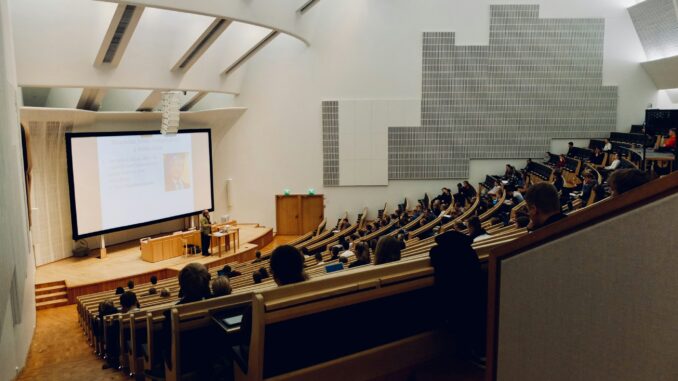
Interim President Katia Passerini, Ph.D., Chief Information Officer Paul Fisher and Professor Jack Shannon, J.D., met with leaders at Bocconi University in Milan, Italy in early February to discuss and help plan its digital transformation. In their presentation, “Digital Transformation: Closing the Digital Gap in Higher Education,” the Seton Hall team shared insights into the University’s transition from a traditional education model to a technology-enriched model. This transformation “more effectively prepares students to become skilled digital citizens who can thrive in a technology-infused future,” according to the university.
A long-time scholar of innovation and transformation, Shannon discussed how “he empowers students to leverage technology to elevate their problem-solving skills and enhance creative thinking. With the goal of expanding the boundaries of what is possible, Shannon urges Seton Hall students and faculty to contemplate potential disruptions and evolution within the higher education landscape. He frequently invokes Wayne Gretzky’s wisdom: ‘Skate to where the puck is going to be, not where it has been.'”
Seton Hall first made a major commitment to information technology in its 1996 strategic plan, which sought “to provide a technologically advanced learning environment for our students and faculty.” Seton Hall subsequently developed a long-range technology plan to “establish a learner-centered, network-centric, mobile computing environment with a wide range of online teaching and learning resources as the core of our network services.”
What followed was a effective transformation led by the University’s Mobile Computing Program:
- All undergraduates and faculty were issued a laptop computer.
- The campus became completely wireless.
- Classrooms and learning spaces were outfitted with cutting-edge technology to facilitate collaboration, experimentation and innovation.
- Faculty were incentivized to integrate technology into teaching and learning, extensively supported by the University’s Teaching, Learning and Technology Center.
“These advancements, along with the University’s robust systems and network infrastructure, enable Seton Hall’s academic enterprise to quickly respond to the demands of a rapidly evolving digital future,” according to the university.
“Digital transformation can’t happen without integrating digital tools and awareness in all learning environments,” Fisher elaborated. “Beyond equal access to technology, Seton Hall University reinforces a digital-first approach to learning through a 24/7 support structure and meaningful curricular innovation.”
On February 8, Passerini and Fisher addressed an audience at Adobe’s New York campus to share how the Adobe Creative Campus program has improved Seton Hall’s student experience, engagement and outcomes. Aligned with the University’s “commitment to equitable access to technology, Adobe’s creative suite reinforces a core curriculum that fosters creative problem-solving, innovation and digital fluency.”
“We began this partnership with Adobe over two years ago as the first campus in the state to provide students and faculty with free access to industry-leading creative applications. What we have cultivated through integrated curricula developments is a vibrant community of interdisciplinary content creators and digital storytellers, shifting away from an audience of passive digital consumers,” Interim President Passerini said.
Building on the “foundational pillars of access, support and curricular integration, Seton Hall has further invested in faculty development initiatives that enhance teaching and learning, and foster a mindset grounded in design thinking.”
Additionally, the University’s “innovation initiatives facilitate the development of digital literacy skills, exemplified by the successful integration of Adobe Creative Projects in areas such as nursing, biology, chemistry, mathematics, history, religious studies, communications and psychology.”
Seton Hall’s journey in digital transformation extends beyond infrastructure and access. “It is a comprehensive commitment to preparing students and faculty for the digitally driven future. Through faculty innovation grants, curricular integration and a focus on creativity and digital fluency, Seton Hall continues to shape a learning environment that not only meets the demands of today, but anticipates the challenges and opportunities of tomorrow.”
